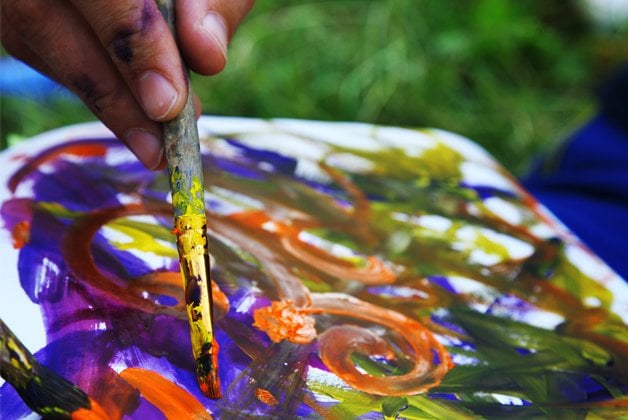
I have friends who feel the need to have creative projects going all the time. One once decided to crochet a bunch of penises – because she’s creative.
Me, not so much. I don’t ever really feel the need to splash paint on canvas or express myself through poetry.
Some have suggested I’m doing myself a disservice by not busting out into interpretive dance or whatever when I get stressed.
There’s a whole mode of thinking that says creativity is a healing exercise. So how does it work, how can you tap into your inner artist, and do you need to have talent?
What the experts say
“I’ve been using the arts therapeutically for over 40 years. Art therapy [was devised] to enable people who had seen the horrors of war to express themselves. Dance therapy was first used as a supplement to physiotherapy after World War II. Music therapy began in the 1950s. Drama therapy started, I would argue, after the Vietnam War. The arts provide the opportunity to make a unique creative thumbprint, an image, sound, colour or movement that nobody else could make in the same way. During chemotherapy, stress is an incipient killer. When you’re going through a traumatic event where the body needs to heal, anything that reduces stress is beneficial.”
BERNIE WARREN
professor, dramatic art,
University of Windsor
“The newest arts therapy is multi-modal, combining art, music, dance, drama, poetry, etc. Almost every baby has been sung to and rocked. Movement and music are part of our DNA. Everybody is creative, no matter what their abilities or what we call talents. Keep a journal and write every day about what’s happening to you. Do a page of drawings. Use the same pencil or pen that you write with, and then after a while get coloured pencils and just begin exploring. Do that for a year, and at the end of it look at it and share some of it with someone close to you.”
JACK WELLER
professor emeritus, California Institute of Integral Studies,
founding director, expressive arts therapy program, San Francisco
“The basic experience of making something out of nothing lets people know they have generative powers. One of the nice things about classes is that people experience their creations as meaningful to others, which is different from creating alone. It doesn’t make any difference whatsoever [if you aren’t good at it]. One study of women with breast cancer found that making art gave them a safe haven from the outside world, brought them insights and allowed them to process difficult emotions. Making art was vitalizing, enabling them to feel connected to a higher power and to one another. Distraction [from crises] can be important. One of the symptoms of trauma is intrusive thoughts. In classes people get a chance to take their minds off their usual concerns.”
KATE COLLIE
professor, oncology, U of Alberta,
registered psychologist and art therapist, Edmonton
“Art therapy can benefit those with mental health issues as well as people who want to use it to relax, boost self-esteem or filter emotions. Activities like pouring emotions out onto canvas let individuals make sense of what they’re feeling. There’s no critique or judgment involved when I analyze the work. It can be very minimalist and still have meaning. The point is to have a trained art therapist review the work doing something on your own is just drawing or painting. I’m trained to ask specific questions to raise people’s awareness and get them talking. I review their work in conjunction with what I’ve learned about the meaning of colours, shapes, lines and images. Everything has a meaning. It’s a way to get deeper into the client’s emotions.”
LEANNE SAWCHUCK
art therapist, Waterloo
Got a question?
Send your Althealth queries to althealth@nowtoronto.com












